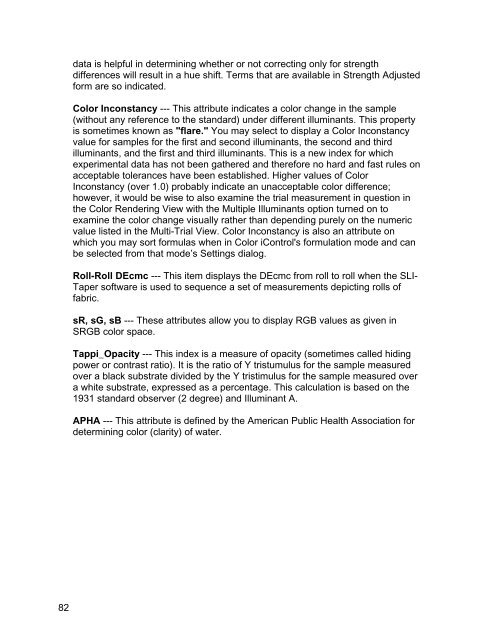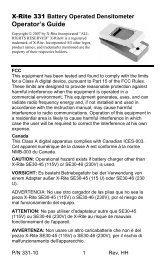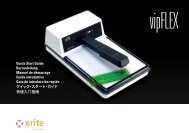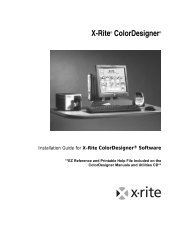Color iQC Help - X-Rite
Color iQC Help - X-Rite
Color iQC Help - X-Rite
Create successful ePaper yourself
Turn your PDF publications into a flip-book with our unique Google optimized e-Paper software.
data is helpful in determining whether or not correcting only for strength<br />
differences will result in a hue shift. Terms that are available in Strength Adjusted<br />
form are so indicated.<br />
<strong>Color</strong> Inconstancy --- This attribute indicates a color change in the sample<br />
(without any reference to the standard) under different illuminants. This property<br />
is sometimes known as "flare." You may select to display a <strong>Color</strong> Inconstancy<br />
value for samples for the first and second illuminants, the second and third<br />
illuminants, and the first and third illuminants. This is a new index for which<br />
experimental data has not been gathered and therefore no hard and fast rules on<br />
acceptable tolerances have been established. Higher values of <strong>Color</strong><br />
Inconstancy (over 1.0) probably indicate an unacceptable color difference;<br />
however, it would be wise to also examine the trial measurement in question in<br />
the <strong>Color</strong> Rendering View with the Multiple Illuminants option turned on to<br />
examine the color change visually rather than depending purely on the numeric<br />
value listed in the Multi-Trial View. <strong>Color</strong> Inconstancy is also an attribute on<br />
which you may sort formulas when in <strong>Color</strong> iControl's formulation mode and can<br />
be selected from that mode’s Settings dialog.<br />
Roll-Roll DEcmc --- This item displays the DEcmc from roll to roll when the SLI-<br />
Taper software is used to sequence a set of measurements depicting rolls of<br />
fabric.<br />
sR, sG, sB --- These attributes allow you to display RGB values as given in<br />
SRGB color space.<br />
Tappi_Opacity --- This index is a measure of opacity (sometimes called hiding<br />
power or contrast ratio). It is the ratio of Y tristumulus for the sample measured<br />
over a black substrate divided by the Y tristimulus for the sample measured over<br />
a white substrate, expressed as a percentage. This calculation is based on the<br />
1931 standard observer (2 degree) and Illuminant A.<br />
APHA --- This attribute is defined by the American Public Health Association for<br />
determining color (clarity) of water.<br />
82












